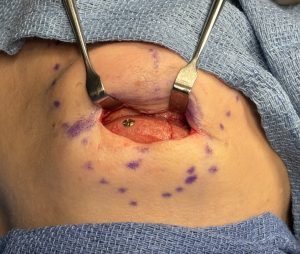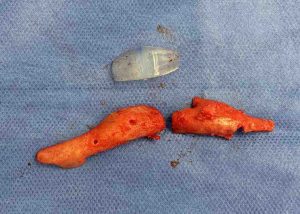Background: Chin ptosis is a common iatrogenic problem caused by removal of structural support underlying the soft tissue chin pad. As a solitary projecting point of the lower face if the bone support is reduced the amount overlying tissues does not change in size. Contrary to popular surgical belief it does to shrink down int size. Rather it keeps the same size and contracts and, as a result, falls off of the end of the bone. This tissue laxity and overhang is what defines iatrogenic chin ptosis.
The treatment of chin ptosis is always a challenge but one of the fundamental maneuvers is to add back structural support in the form of an implant to lift the tissues back up. A variety of implant materials can be used but Medpor because of its tissue ingrowth is often touted as the most effective as the tissue grabs onto it.
But Medpor chin implants have one problem, whether used in chin ptosis correction or just in primary chin augmentation, particularly in females. They often are too bulky and wide and aesthetically unattractive for the more redefined facial features of most females. So with adequate chin ptosis correction using a Medpor chin implant, but the female patient finds it too big/wide, how is improvement achieved without recreating the original chin ptosis problem.
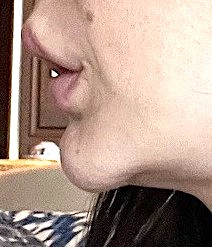
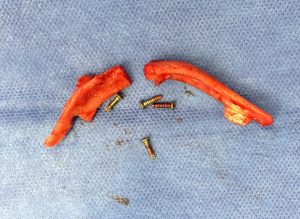
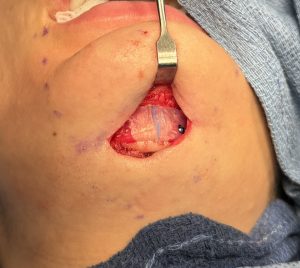
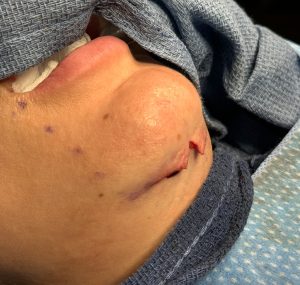
While it is true that the larger the chin implant is the more effective the chin ptosis correction will be. But there is a balance between the side of the implant and its chin augmentation effect regardless of how well it improves chin pad ptosis. But downsizing a chin ptosis corrective implant does create the possibility of re-creating the ptosis for which it was originally placed. Thus ie implant material needs to be maintained particularly in the central projection area. The loss of implant volume and the need for wide tissue stripping/undermining, particularly from a Medpor implant, may necessitate some excision of redundant soft tissue chin pad to prevent any recurrent ptosis from being created.
Key Points:
1) Chin ptosis correction with a large implant can pose secondary aesthetic concerns particularly in females.
2) A large chin implant s/p ptosis correction can be removed but should be partially replaced or the original ptosis problem will recur.
3) With a smaller chin implant some submental chin may need to be removed and tucked.
Dr. Barry Eppley
World-Renowned Plastic Surgeon



